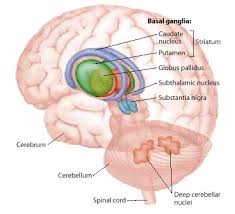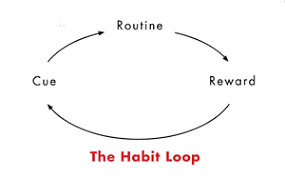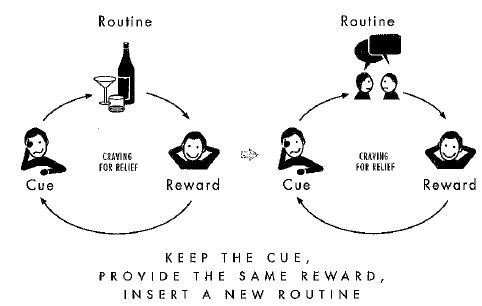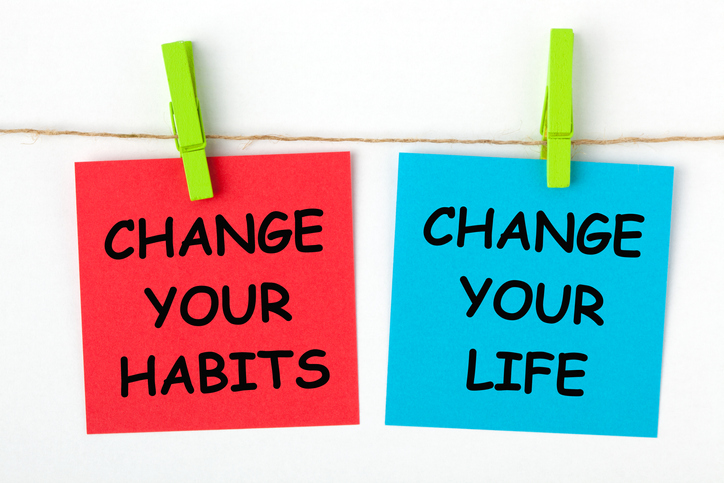
With the interrelationship of lifestyle behaviors and the synergistic effect on heart disease and mortality, what can be done to help patients modify these behaviors so that the risk of heart disease is reduced?
Giving patients the information and tools needed and empowering them to make the necessary changes in behavior is vital — nurses play an integral role in educating and empowering patients. Because of the rapport nurses establish with patients and the trust patients have in nurses, nurses are in a perfect position to help patients with lifestyle modification.
Habits

Since lifestyle modification involves changing habits, a brief description of how habits are formed and some of the best ways for changing habits will be helpful. The brain is intimately involved in habit formation and repetition. In particular, a small structure in the brain known as the basal ganglia is central to remembering patterns and acting on those patterns, thus helping form and store habits (Duhigg, 2012).

Scientists believe habits are formed because our brains want to save effort. Habits are formed in a three-step process – there is a cue which triggers a routine which leads to a reward. This has become known as a habit loop. Cues can be almost anything – a time of day, an emotion, being with a group of people, a certain food, a logo, etc. For example, a person has a number of habits that occur without thinking at the beginning of their day – arise, stretch, brush teeth, exercise, shower, get dressed, eat breakfast and so on. The time of day is a cue for these habits.

Scientists once thought that the human brain was a rigid structure and could not change. Scientists now know that the human brain is very mold-able and is constantly changing. This is known as neuroplasticity. Neuroplasticity is one of the reasons habits can become so ingrained. It is also why habits can be changed. One of the most effective ways to change habits is to change the routine part of the habit loop. For instance, the cue might be a stressful event and that leads to eating something sweet (routine) which makes you feel better (reward). Change that less than healthy habit by changing the routine – when there is a stressful event (cue), instead of eating something sweet (routine) to manage stress, go for a walk (routine) to manage stress and feel better (reward) (Duhigg, 2012).
Neuroplasticity is fascinating…

An interesting video on how habits change brain structure
Health Coaching

With an understanding of habit formation and neuroplasticity, a knowledge of health coaching comes next. Patients with risk factors for heart disease or other chronic diseases can benefit from health coaching by a trained member of the primary care team. An and Song (2020) looked at the effectiveness of health coaching on cardiovascular risk factors. They found that health coaching improved the performance of physical activity, healthy eating, managing stress and taking responsibility for ones’ health (An & Song, 2020).
With knowledge of the difference health coaching can make in patient’s lives, it is vital that all nurses learn these skills. Current training in health coaching and motivational interviewing is occurring in some nursing school curriculums but not in others (Kayleigh Cross, personal communication, July 8, 2020). It should be a priority for nursing schools to include education and training in health coaching and motivational interviewing in their curriculums. NANDA International recognizes Readiness for enhanced Knowledge as an approved nursing diagnosis (Ackley, Ladwig, Makic, Martinez-Kratz, & Zanotti, 2020). Nursing interventions and rationales should include enhancing the patient’s knowledge of health promotion as well as health coaching and motivational interviewing (Ackley et al, 2020).
References
Ackley, B. J., Ladwig, G. B., Makic, M. F., Martinez-Kratz, M., & Zanotti, M. (2020). Nursing Diagnosis Handbook: An evidence-based guide to planning care (12th ed.). St. Louis, Missouri: Elsevier.
An, S., & Song, R. (2020, May 5). Effects of health coaching on behavioral modification among adults with cardiovascular risk factors: Systematic review and meta-analysis. Patient Education and Counseling. http://dx.doi.org/10.1016/j.pec.2020.04.029
Duhigg, C. (2012). The power of habit. New York, NY: Random House.
Kayleigh Cross, personal communication, July 8, 2020